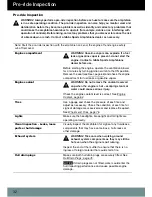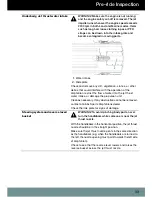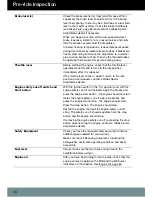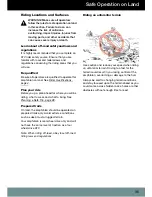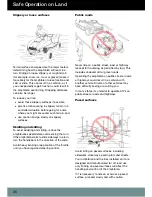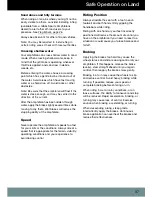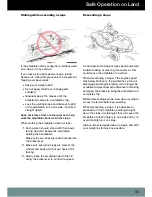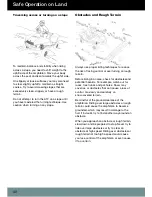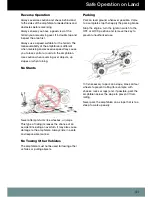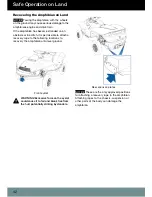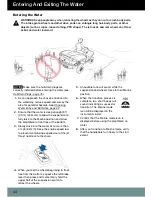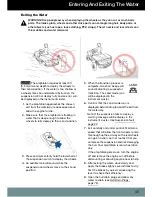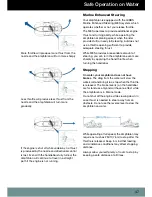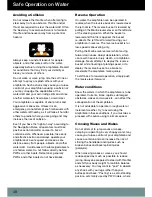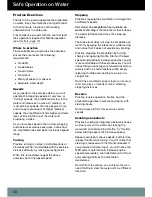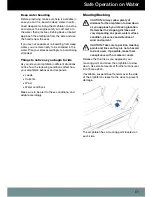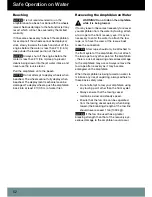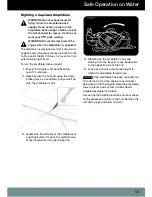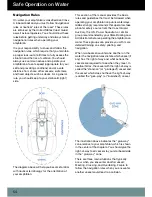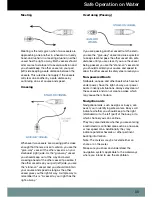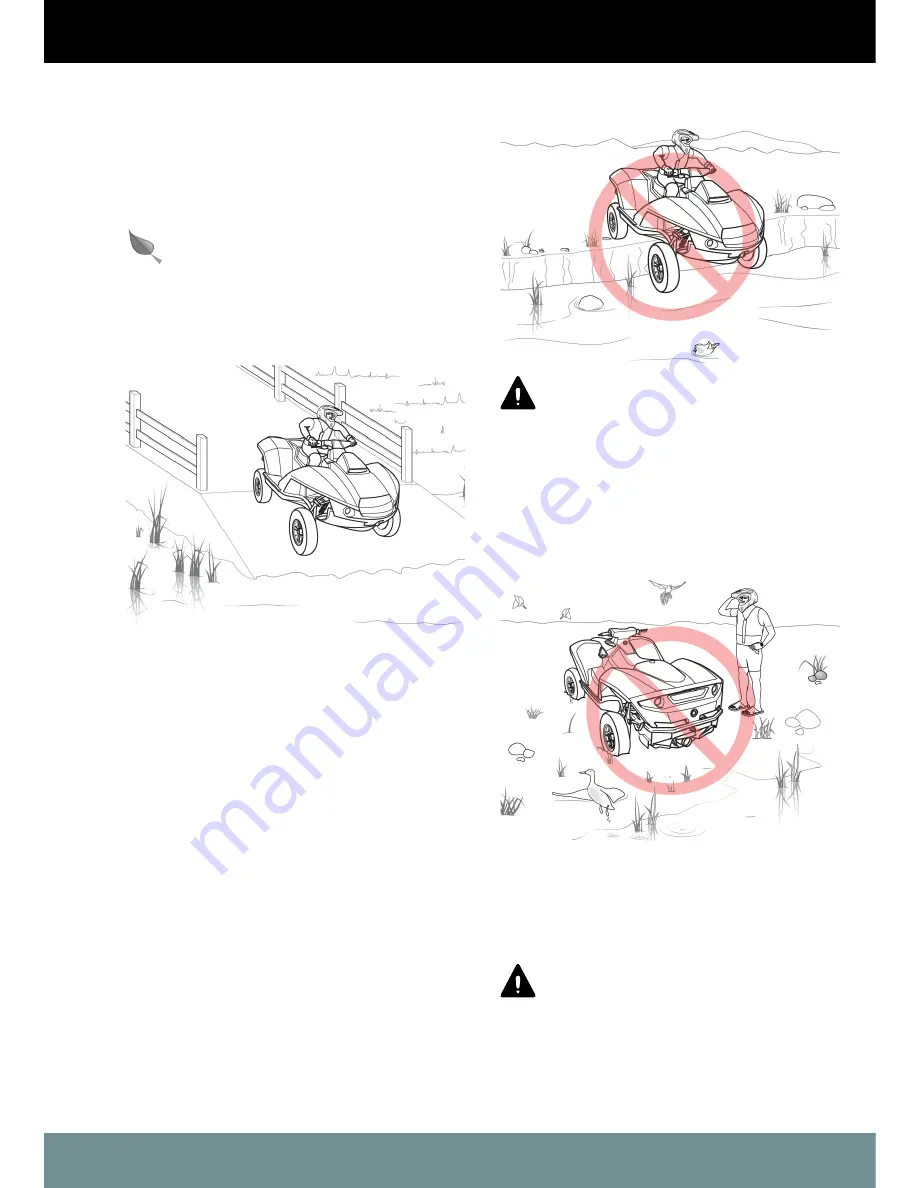
Entering And Exiting The Water
43
Entering And Exiting The Water
Choosing Water Entry and Exit Sites
To enter the water, it is essential that you locate a
suitable entry site and that you have planned
where the amphibian is to exit the waterway. If
you have any doubts about a chosen access site,
locate an alternative site
Always respect local wildlife and ensure
that using the selected access point will
not have a detrimental effect on the
shoreline/river bank. It is your
responsibility to minimize damage to the
environment.
The most suitable and recommended access site
is a hard slipway. If one is not available, then
choose an entry point into the water that has a
firm surface and gradual slope. Be sure that the
waterway has sufficient depth for the draft of the
hull and is free of underwater hazards and
obstacles.
Choose an entry point into the water that has a
gradual slope. This is important because as the
amphibian enters the water, the front will rise as
it starts to float, further reducing the ground
clearance at the rear.
WARNING! Do not ride down a steep
slope, off an undercut (for example, an
eroded river bank,), a dock or other
drop-off into the water. Ensure there are
no obstacles or hazards at the entry
point.
These could cause a loss of control,
overturning, hull damage, serious injury
or death.
Avoid marshy areas and gravel surfaces. The
amphibian can get stuck in marshy ground. If
gravel surfaces are encountered, reduce speed
to minimize the risk of debris entering the jet
intake.
WARNING! Debris in marshy water or
small stones on gravel surfaces may be
picked up and thrown rearwards by the
jet unit, injuring bystanders and causing
damage to property or jet unit.
Summary of Contents for quadski
Page 2: ......
Page 13: ...Safety Labels 9 Label 7 Europe Label 8 Label 9 Label 10 Label 11 Label 12 Label 13 ...
Page 14: ...Safety Labels 10 Safety Labels Label 14 Label 15 Label 16 ...
Page 15: ...Safety Labels 11 Label 17 Label 18 Label 19 Label 20 ...
Page 96: ......
Page 97: ......




